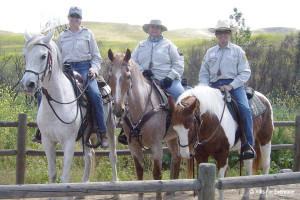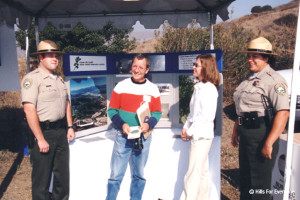 This information was compiled by Ruth Taylor Kilday, Mountains Conservancy Foundation, from “Economic Impacts of Protecting Rivers, Trials, and Greenway Corridors,” a resource book, prepared by Rivers and Trails Conservancy Assistance, National Park Service, U.S. Department of the Interior, 1990 Edition, funded in part by The Conservation Fund. Download the Economic Benefits of Parks(16 KB – PDF).
This information was compiled by Ruth Taylor Kilday, Mountains Conservancy Foundation, from “Economic Impacts of Protecting Rivers, Trials, and Greenway Corridors,” a resource book, prepared by Rivers and Trails Conservancy Assistance, National Park Service, U.S. Department of the Interior, 1990 Edition, funded in part by The Conservation Fund. Download the Economic Benefits of Parks(16 KB – PDF).
- Increased Property Values. Open space and parks provide a variety of amenities such as preservation of waterfront and land, convenient educational and recreational opportunities, attractive views, and wildlife enhancement. This can be reflected in increased real property values and increased marketability for property located near open space and parks.
- Corporate Relocation. The Joint Economic Committee of the U.S. Congress reports that a city’s quality of life is more important than purely business-related factors when it comes to attracting new businesses, particularly in the rapidly growing high tech and service industries. Quality of life aspects include convenient access to natural settings, recreational and cultural opportunities, and open space. Companies realize the benefits of healthy employees, both in increased efficiency and decreased health insurance claims. Open space and parks can provide these convenient opportunities.
- Public Cost Reduction. By conserving open space and parks rather than permitting intensive development, local agencies may reduce costs for public services such as sewers, trash, water, and roads. The choices between retaining undeveloped land as open space or allowing development must be considered. Expansion almost always results in increased public service requirements. In many situations, the cost of providing these services to development is much higher than any revenues to local governments resulting from an expanded tax base.
 Expenditures by Residents. Leisure time activities, education pursuits, and recreation expenditures can account for substantial portions of family spending. This can include educational courses, scientific study, and recreational pursuits such as special events, walking/running for health, physical fitness/health, camping, hiking, bicycling, fishing, photography, sailing, equestrian uses, and driving for pleasure.
Expenditures by Residents. Leisure time activities, education pursuits, and recreation expenditures can account for substantial portions of family spending. This can include educational courses, scientific study, and recreational pursuits such as special events, walking/running for health, physical fitness/health, camping, hiking, bicycling, fishing, photography, sailing, equestrian uses, and driving for pleasure.- Commercial Uses. Open space and parks can provide opportunities for businesses, film locations, and other resources for commercial activities. Communities along the park boundaries can provide visitor services which include special events, food, recreational equipment sales and rentals, lodging, and convenience items.
- Agency Expenditures. The major agencies involved in acquiring and managing land support the local and regional economy by providing jobs, purchasing supplies and services to develop, operate, and maintain parks and related improvements. Numerous non-profits and community groups focusing on environmental quality also affect the economy. Employment generated by parks can be targeted by the managing agency to benefit particular needs of the community such as high unemployment, youth at risk, and the handicapped. The federal government pays a prorated lump sum to each county within which federal land is owned to defray the loss of a tax base due to federal ownership of the land.
- Visitor Services/Travel Industry. Travel and Tourism … is increasing in relative economic importance. Natural, historical, cultural, and recreation pursuits are very relevant today. The most populated area in the United States, Los Angeles, can list the Santa Monica Mountains National Recreation Area as a great asset. Weekend and weekday trips are on the increase, and two week vacations are on the decline. Open space and parks provide unique resources which nearby travel and tourist-serving establishments, chambers of commerce, and local visitor bureaus can capitalize on and feature in its ads.
State Parks Are Important to the Local Economy
Every year, California’s 278 state parks attract millions of tourists, who spend $4.32 billion annually in park-related expenditures. A recent study found that for each trip to a state park, visitors spend an average of $57.63 in the neighboring communities. Visitors generate so much local economic activity that every dollar spent on state parks creates another $2.35 for California’s treasury.
State parks often times provide the lifeblood for local businesses that depend on tourists as a large portion of their customer base. In addition, state parks directly support 188 privately operated in-park concessions, which create local jobs and entrepreneurial opportunities. Without the protection of a secure funding source, these local businesses could suffer a large drop in revenues, potentially forcing the business to layoff employees or even close.